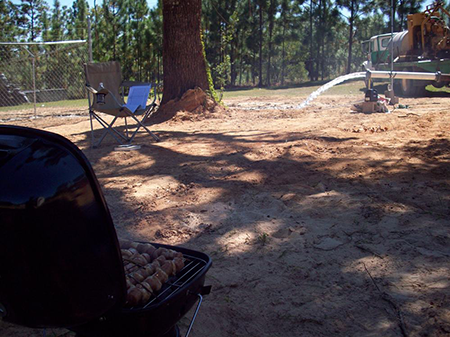Aquifer Testing
Aquifer tests are critical to all groundwater development projects. Properly planned, implemented and analyzed, aquifer tests provide a wealth of information which can be used to efficiently develop and maximize your groundwater resource. OAI has planned, implemented and analyzed data for scores of aquifer tests. Whether the tests are step-rate or constant rate using one or several observation wells, we apply our training to accurately extract the hydraulic data from the test for your benefit.
OAI Has Experience With Aquifer Testing Associated With:
- Permitting public water supply wells
- Litigation issues
- Wellfield feasibility studies
- Wellfield design
- Capture zone analysis
|
- Wellhead protection
- Contaminant transport/migration modeling studies
- Increased production
- Technical review of existing aquifer test data
|
Two Well Aquifer Test
OAI completed follow-up aquifer testing on two industrial supply wells. The two wells are 71 feet apart horizontally and completed in two hydraulically separate aquifers. The tests were run at a production rate of 1,001 gpm from each well and the tests were started about 4 minutes apart. If you ever wondered what 2.88+ million gallons per day looks and sounds like, take a look at this video. The test went off without a hitch and all data generated from the testing indicated the aquifers were performing as originally planned and developed by OAI.
Time for Lunch
One of the lesser known benefits of aquifer testing occurs about six hours into the test. Measurements are taken at hourly intervals and time allows for some serious cooking, grilling out if you will. On a recent test, I took this photo of some chicken and Conecuh sausage K-bobs grilling slowly as a new public supply well is tested at the rate of 750 gpm, see below. Attention to detail is critical to aquifer testing and to grilling. As a side note, if you look in the upper left habd corner of the photo below, you will see an existing public supply well. On this project, OAI completed research into developing a second well in the same aquifer at this location. The research and follow-up testing proved the concept. The new well was completed about 91 feet from the original boosting permitted site production from 658,000 gpd to 1.37 mgd.

"Putting geology to work for you."